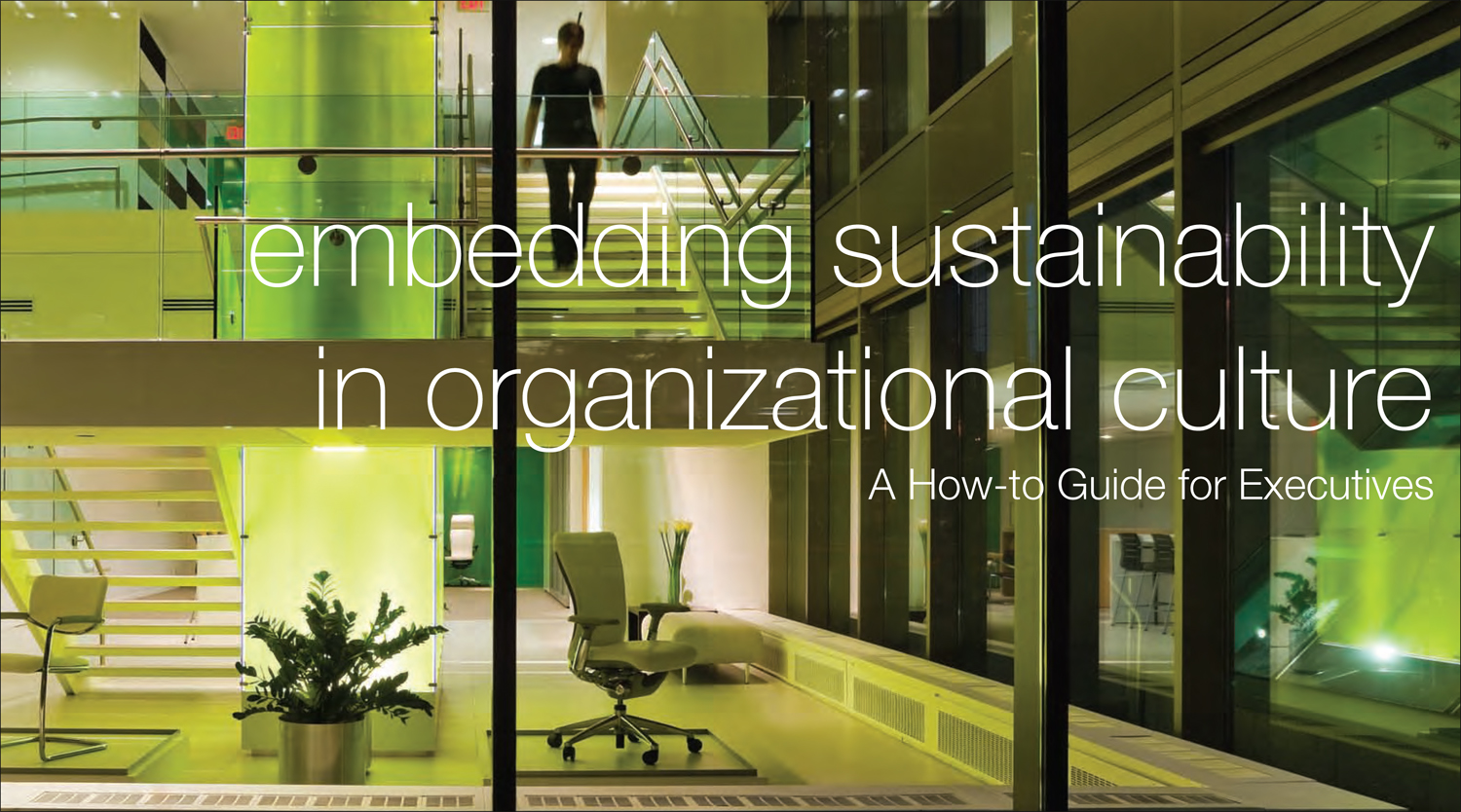How Large Organizations Foster Innovation
by Steve O'Keefe on December 14, 2010

An expansive new study just released by the Network for Business Sustainability provides valuable suggestions for executives in large organizations about how to keep their companies innovative and competitive.
The report, “Embedding Sustainability in Organizational Culture,” involved reviewing over 13,000 academic and industrial studies, then narrowing these down to 179 primary sources which were synthesized to extract common principles and best practices.
The issue of how to spur creativity in large organizations was a driving motivation for the new book, MINITRENDS. Author John H. Vanston, Ph.D., a nuclear engineer, university professor, and chairman of the technology forecasting firm, Technology Futures, Inc., is often called upon by large businesses to help them predict the future. These big companies want to ride technology trends, not be run over by them.
It’s one thing to know what’s coming, and another to be able to adjust to it. The new report from the Network for Business Sustainability is chock-full of ideas for keeping large organizations from getting stuck. It contains both the principles of innovation and copious examples of clever ways big companies have found to stay nimble. Here are some suggestions culled from the 74-page report:
- Remove barriers to teamwork and collaboration through the abolition of separate dining rooms for managers and line employees.
- Support an innovation culture through small gestures of recognition. At Bank of America, a small pin presented by high-level management “gave encouragement to employees who enacted the organization’s values and refocused management styles toward promoting and supporting these values.”
- The Ethical Corporation begins every meeting with a quick success story. Storytelling is used to create the “true believers and adherents” essential for embedding innovation. These stories help teach team members new ways of thinking and doing things.
- Include employees in developing team mission statements. This helps employees “build a sense of collective ownership, commitment, and focus and, through this, a culture of innovation.”
- Engage suppliers, customers, and even community representatives in dialogue about innovation. “Organizations must consider the entire supply chain and process, where suppliers and vendors are seen as partners co-designing and co-creating ideas and sustainability innovations.”
- Senior management must nurture feedback channels to “create a safe place for bold ideas to emerge.” The authors suggest that it is not enough to provide a feedback mechanism, but that senior management must actively solicit feedback through those channels and hold regularly-scheduled meetings to review suggestions.
- Innovation challenges, involving deadlines, recognition, and financial rewards, have been effective spurring innovation in many companies.
The study was written by Stephanie Bertels, PhD., an assistant professor at Simon Fraser University. She has made the results available, at no charge, in two different formats:
- A Systematic Review of the Body of Knowledge ( 74-page PDF)
- A How-To Guide for Executives (20-page PDF)
For those companies wishing to remain innovative, and for chief executives concerned about the future of their organizations when they leave, I would also recommend the book, MINITRENDS. If we have focused on entrepreneurs and small businesses here on this blog, that’s because innovation in large organizations often is the result of employees cultivating an entrepreneurial mindset and the organization acting like a venture capitalist in support of those individual efforts.
Fully one-third of MINITRENDS is devoted to fostering creativity in large organizations. The book is inspiring to individual employees and provides them with a set of skills for identifying and qualifying trends that show promise for profitable development in the near future. It should be required reading in organizations that hope to outlive their founders.
STEVE O’KEEFE
News Editor, Minitrends Blog
Source: “Embedding Sustainability in Organizational Culture” (PDF), Network for Business Sustainability, December 2010
Image courtesy of the Network for Business Sustainabilty, used under Fair Use: Reporting.
Comments
Got something to say?













